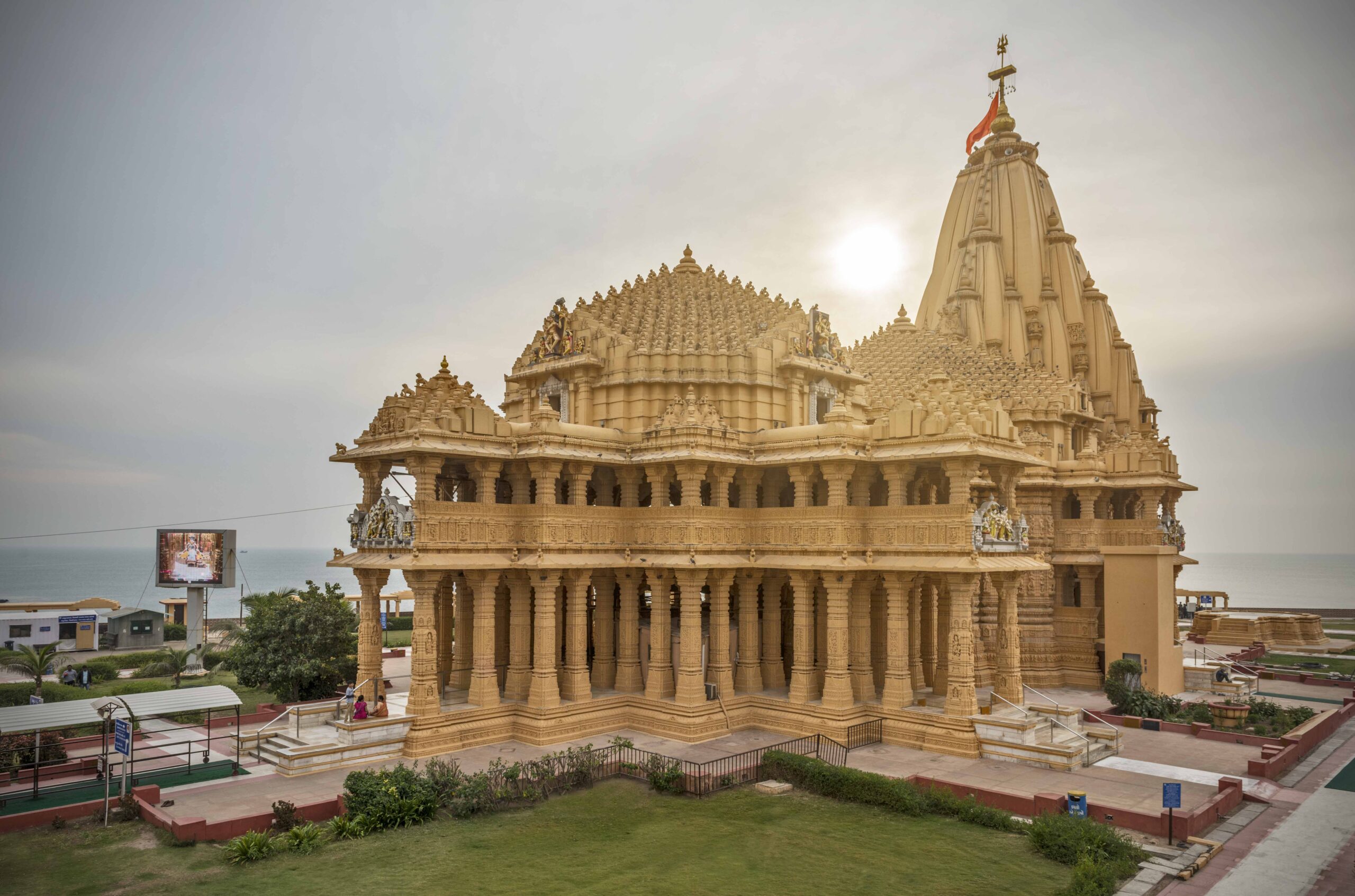Somnath Temple: A Timeless Beacon of Devotion and Resilience

Nestled on the west side of the Indian state of Gujarat, the resplendent Somnath Temple is a testament to faith, history, and enduring resilience. Its honey-colored walls are Intricately carved. It’s a revered religious site; a living chronicle of India’s rich cultural tapestry. Somnath Temple is steeped in myth and legend, believed to be the hallowed ground where the first of the twelve holy jyotirlingas emerged in India. It is said that Lord Shiva manifested as a fiery column of light, an event that marked the temple’s sanctified origins. The temple’s location at the confluence of the Kapila, Hiran, and Sarasvati rivers, with the waves of the Arabian Sea embracing its shores, adds to its spiritual significance.While the temple’s timeline can be traced back to 649 BC, its antiquity is believed to reach even further into the past. The present form of the temple is a reconstruction that took place in 1951, thanks to the efforts of visionary leader Sardar Vallabhbhai Patel. This revival was a homage to the temple’s historical importance and a declaration of India’s commitment to preserving its cultural heritage.
The Enduring Architecture and Divine Artistry
The Somnath Temple’s serene and symmetrical architecture pays homage to traditional designs, offering a glimpse into the ancient craftsmanship that shaped its form. The creamy hue of the temple’s façade blends harmoniously with its surroundings, while exquisite sculptures adorn its walls, telling stories of devotion and mythology.Central to the temple’s sanctum is the large, black Shiva lingam, one of the twelve most sacred Shiva shrines known as jyotirlinga. This divine symbol draws millions of devotees each year, igniting their spiritual connection and reaffirming the temple’s significance in Hindu beliefs.
Echoes of History: Al-Biruni and Mahmud of Ghazni
The historical significance of Somnath Temple extends beyond the borders of India. Arab traveler Al-Biruni’s glowing description of the temple in the 11th century sparked the interest of Mahmud of Ghazni, an infamous conqueror from Afghanistan. In 1024, Mahmud led a battle that saw the fall of the temple and the plundering of its immense wealth. This marked the beginning of a cycle of destruction and reconstruction that would span centuries.The temple’s journey through history has been one of enduring challenges. Razed and rebuilt numerous times by rulers like Alauddin Khilji and Aurangzeb, it stood as a symbol of undying devotion and perseverance against the odds. Despite the trials of time, the temple remained steadfast, inspiring generations with its enduring spirit.
Embracing the Divine: Best Time to Visit
The best time to experience the divine aura of Somnath Temple is during the cooler months of October to February. However, the temple welcomes visitors throughout the year. Special occasions like Shivratri and Kartik Purnima are celebrated with fervor, adding an extra layer of devotion to the air.
As the sun sets on the western coast of Gujarat, the temple comes alive with a mesmerizing sound-and-light show narrated by the legendary Amitabh Bachchan. Somnath Mandir of Gujarat stands as a symbol of Perseverance shining as a beacon of unwavering devotion.
